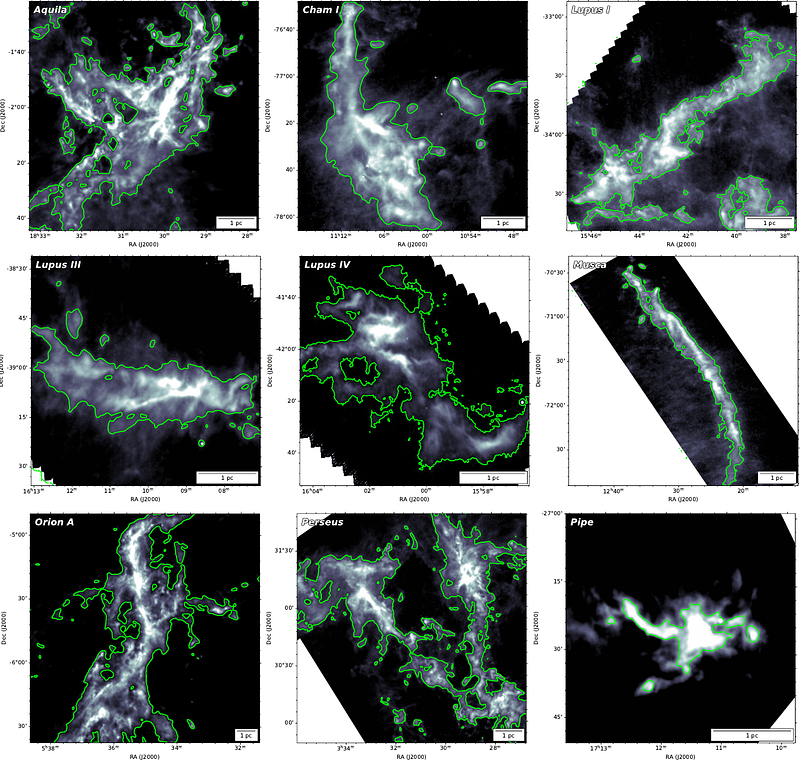Why is the Star Formation Rate Proportional to Dense Gas Mass?

Why is the Star Formation Rate Proportional to Dense Gas Mass?
Sihan Jiao, Fengwei Xu, Hauyu Baobab Liu, Yuxin Lin, Jingwen Wu, Zhi-Yu Zhang, Zhiqiang Yan, Di Li, Chao-Wei Tsai, Yongkun Zhang, Linjing Feng, Ke Wang, Zheng Zheng, Fanyi Meng, Hao Ruan, Fangyuan Deng, Keyun Su
AbstractOne of the most profound empirical laws of star formation is the Gao-Solomon relation, a linear correlation between the star formation rate (SFR) and the dense molecular gas mass. It is puzzling how the complicated physics in star-formation results in this surprisingly simple proportionality. Using archival Herschel and Atacama Large Millimeter/submillimeter Array Observations, we derived the masses of the most massive cores ($M^{\rm max}_{\rm core}$) and masses of the gravitationally bound gas ($ M_{\rm gas}^{\rm bound}$) in the parent molecular clouds for a sample of low-mass and high-mass star-forming regions. We discovered a significant correlation $\log(M^{\rm max}_{\rm core}/M_{\odot}) = 0.506 \log(M_{\rm gas}^{\rm bound}/M_{\odot})-0.32$. Our discovered $M^{\rm max}_{\rm core}$-$M_{\rm gas}^{\rm bound}$ correlation can be approximately converted to the Gao-Solomon relation if there is (1) a constant 30% efficiency of converting $M^{\rm max}_{\rm core}$ to the mass of the most massive star ($m^{\rm max}_{\rm star}$), and (2) if SFR and $m^{\rm max}_{\rm star}$ are tightly related through $\log({\rm SFR}/(M_{\odot} {\rm yr}^{-1})) = 2.04 \log(m^{\rm max}_{\rm star}/M_{\odot})-5.80$. Intriguingly, both requirements have been suggested by previous theoretical studies (c.f. Yan et al. 2017). Based on this result, we hypothesize that the Gao-Solomon relation is a consequence of combining the following three non-trivial relations (i) SFR vs. $m^{\rm max}_{\rm star}$, (ii) $m^{\rm max}_{\rm star}$ vs. $M^{\rm max}_{\rm core}$, and (iii) $M^{\rm max}_{\rm core}$ vs. $M_{\rm gas}^{\rm bound}$. This finding may open a new possibility to understand the Gao-Solomon relation in an analytic sense.